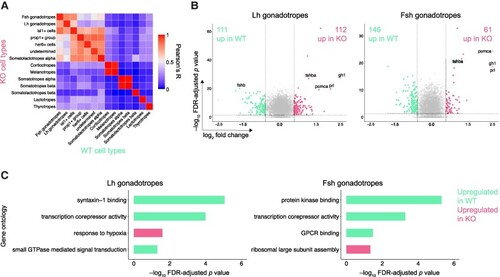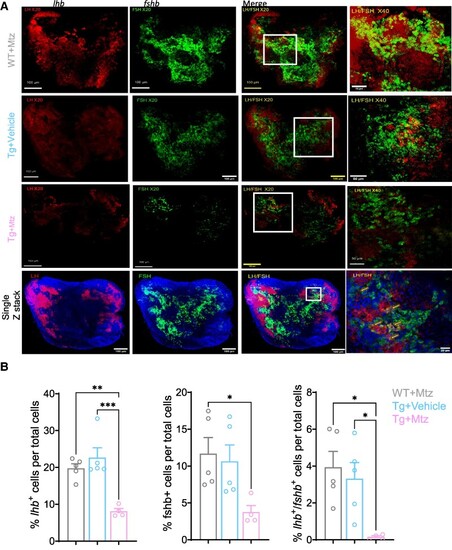- Title
-
Gonadotropin releasing hormone - gonadotropes interactions revealed by pituitary single-cell transcriptomics in zebrafish
- Authors
- Tanaka, S., Yu, Y., Levavi-Sivan, B., Zmora, N., Zohar, Y.
- Source
- Full text @ Endocrinology
|
Identification of major pituitary cell types in wild-type and Abbreviation: UMAP, uniform manifold. |
|
Molecular factors potentially regulating LH and FSH secretion in zebrafish females. Heatmaps of z-scaled expression centered at 0 for individual comparisons between cell types for genes encoding (A) receptors, (B) peptides, and (C) transcription factors. |
|
Major differences between WT and Abbreviations: DEG, identified differentially expressed gene; WT, wild-type. |
|
Depletion of GnRH3 neurons leads to reduced gonadotropes number in mature female pituitaries. WT females and Abbreviations: Mtz, metronidazole; Cont, control; WT, wild-type; Tg, transgenic. |
|
Proposed functional regulatory pathways of LH and FSH gonadotropes in adult female zebrafish. Gnrh3 directly acts on LH gonadotropes through Gnrhr2 to regulate gene expression of various non- |





